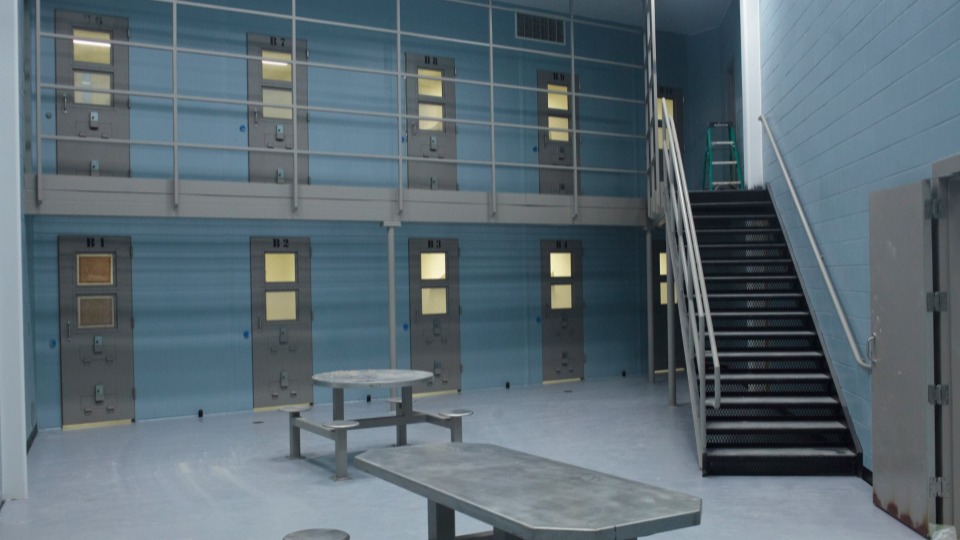
“Prisoners lives matter,” chanted hundreds of imprisoned men who had stopped work and occupied the prison yard in the Kinross State Penitentiary, in Kinross, Mich., on Sept. 10, 2016.
Nearly the entire 150 or so imprisoned kitchen staff protested inhumane living and working conditions. The event had been planned for the 45th anniversary of the famous Attica prison uprising that saw law enforcement kill 37 people in a violent revenge-motivated mass killing.
Despite a negotiated settlement that saw the prison administration agree to demands to clean up mold infestations, restrain abusive guards, relieve overcrowding, humanize visitation rules, and provide improved medical services, the strike was met with pure revenge-filled violence, according to inmates who witnessed the events.
One former inhabitant of the Kinross facility wrote three years later: “Black mold creeps out from the institutional-white, rust-proof paint intended to contain it. It loiters around the bases of toilets, seeps from under floor tiles and scales the walls of showers. Eight men pack cubicles designed for six. The food tastes indigestible; some staff are verbally abusive.”
The state justified medical maltreatment of imprisoned people with the claim that they are simply copying the terrible conditions in the health system in the state in general. The Michigan Department of Corrections claimed that poor medical care does not violate the Constitution’s ban on cruel and unusual punishment because it is “better than what the majority of the prisoners received prior to entering prison.”
While the major media and prison administrators characterized the strike and occupation as a “riot,” the real riot took place after the negotiations ended. The prison’s “Emergency Response Team,” teams of heavily armed and armored soldiers, went on a rampage, assaulting, trapping, gassing, and beating the inmates, even when they had not participated in the action. Participants were sent to solitary confinement and redistributed across the state’s prison system.
Despite the massive, violent response, prison administrators sought public sympathy for their actions. A Michigan Department of Corrections spokesperson told the Detroit Free Press: “It’s a very scary thing to see hundreds of prisoners moving as one body when, already in a prison setting, you are very outnumbered… You can’t allow a scenario for prisoners to move as one and act as one voice.” The system’s officials attempted to appear as if they were victims.
The truth is that state authorities and prison guards knew that conditions at Kinross were terrible. Michigan’s correctional administration arm, one of the larger parts of the state government, has operated under massive budget constraints for almost two decades. Republican demands for tax cuts didn’t match their simultaneous demands for increasing the mass incarceration system. Feckless Democratic responses to either ensured that mass incarceration would expand without appropriate resources for humane treatment of imprisoned people.
The system’s real fear came from the fact that imprisoned people chose to organize and protest degrading conditions. They insisted on being recognized as humans. The prison system refuses such recognition and always responds with more atrocities.
Michigan’s budget crises have created a system for warehousing criminalized people. Since 1984, the system has increasingly targeted African Americans, Latinx, and Indigenous people. Before the early 1980s, 77% of the state’s prison populations were white males. Today, Michigan—a single state—has a higher incarceration rate than almost every country in the world, and over 54% of inmates are Black, Latinx, or Indigenous, according to the Prison Policy Initiative.
In a stage of capitalism where outsourcing and deindustrialization have devastated Michigan’s manufacturing economy, small towns across the state have come to rely on a racist system of mass incarceration for their economic livelihood. Places like Kinross, Ionia, and Muskegon host sometimes multiple prisons. Prison administrators are carefully integrated into those cities’ power structures, ensuring broad sympathy for mass incarceration among the inhabitants.
In some of those places, the presence of prisons has been so normalized and ingrained in community life that residents believe it’s just like living next to the factories that once dotted the landscape.
Budget shortfalls combined with a dominant culture that prioritizes dehumanizing punishment have led to severe hardships. Medical care is often denied or constrained. Food products made by Aramark, a private corporation with a $145 million contract to feed many of Michigan’s 40,000 inmates, have been shown to be expired, rotten, and even infested by rodents and insects. (Aramark also contracts with several of the state’s public universities.) Wages for imprisoned labor have stagnated, as have the availability of jobs.
Michigan’s prison system has turned into an overcrowded warehouse of brutalizing conditions that primarily targets Black and brown people. Incarcerated people are guarded by the state’s mostly white small-town residents who depend on the system for their own minimal economic survival.
When tightening budgets force the system to release some prisoners, new levels of surveillance are created. More and more people are enrolled in the work of keeping track of the state’s 189,000 people on probation or parole. As lawyer and abolition activist Derecka Purnell has argued, “reforms” that allow imprisoned people to be diverted to places other than prison have produced a mass surveillance society. The new system “encourages judges and cops and prisons to enter into our most sacred spaces, our homes, therapy sessions, jobs, schools, hospitals, even places of worship,” writes the author of Becoming an Abolitionist.
“Your shelter manager or employer now surveils your whereabouts,” Purnell adds. “Your landlord dangles an eviction card over your head for new and arbitrary reasons. Your court-mandated therapy group leader determines that you violated your probation because you are too poor to pay for classes you didn’t sign up to attend.”
In the end, mass surveillance becomes of tool for exploiting and managing almost 200,000 people. It is a privatization of imprisonment that shifts the burden of control from prison guards to all of society. It literally traps Michigan’s social workers, community leaders, small town residents, employers, and co-workers into guarding criminalized people.
More than five years later, the Kinross prison strikers show Michiganders the path forward. A struggle for humanity, away from fear of the system’s retaliation, is our best hope.










